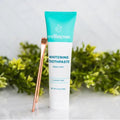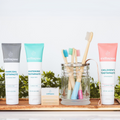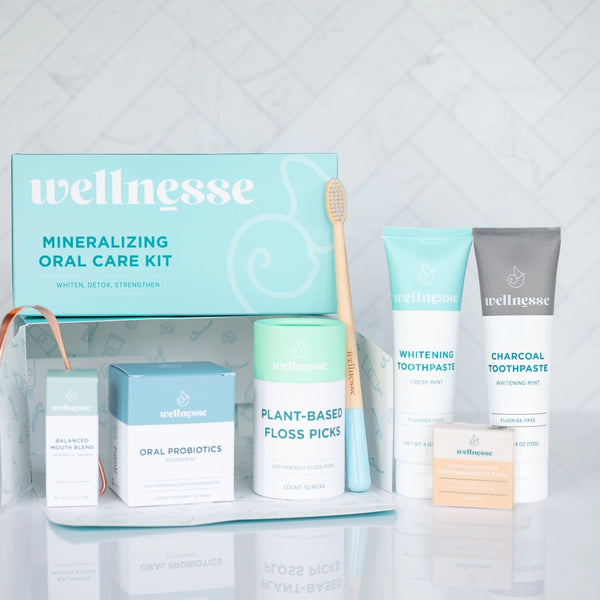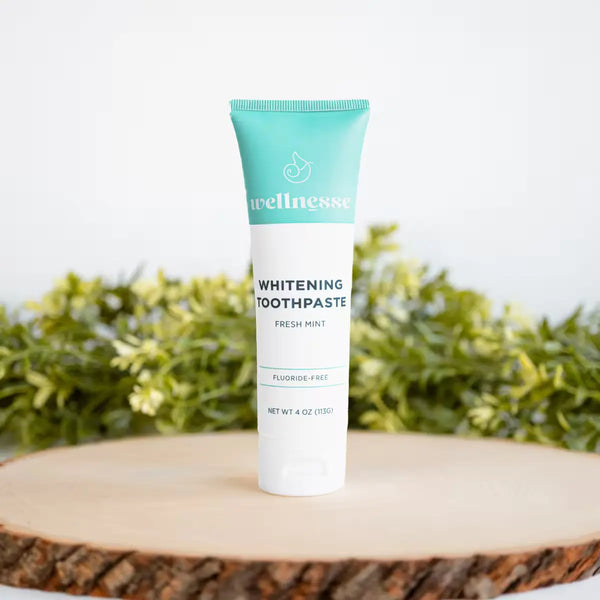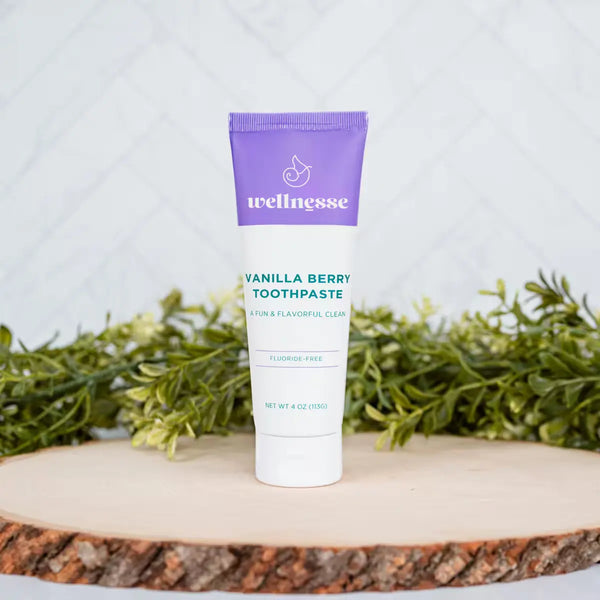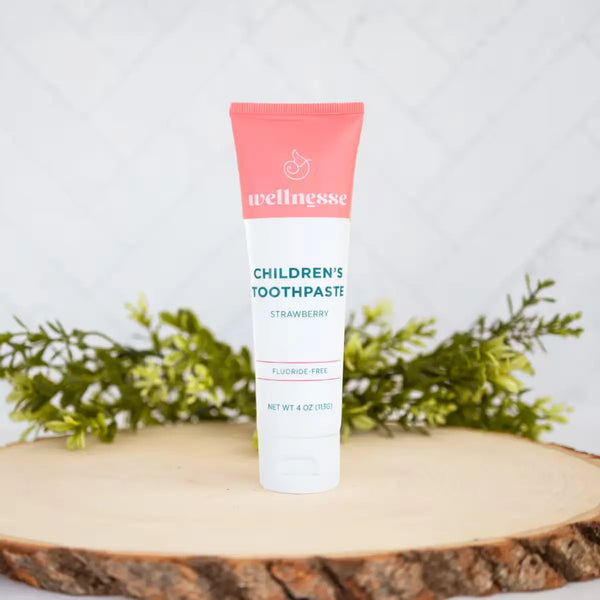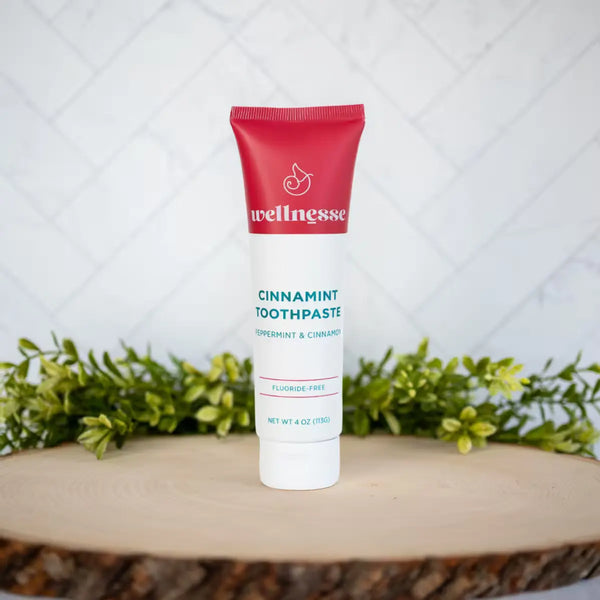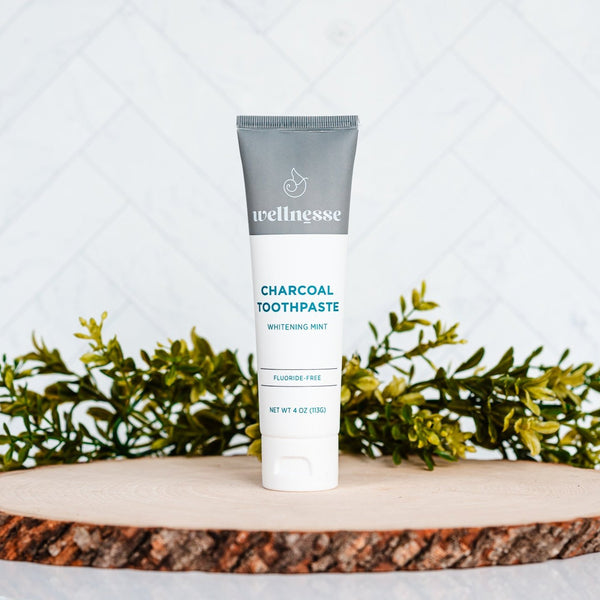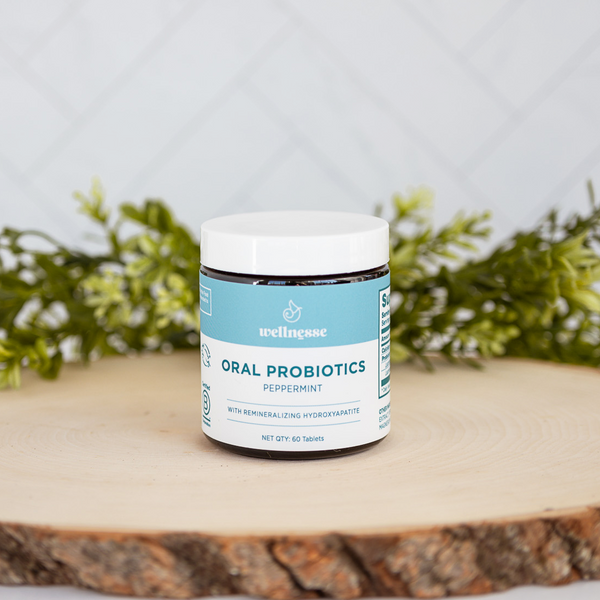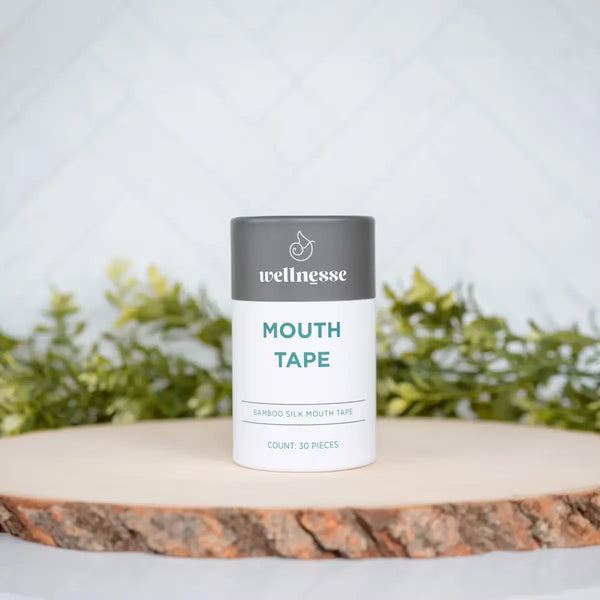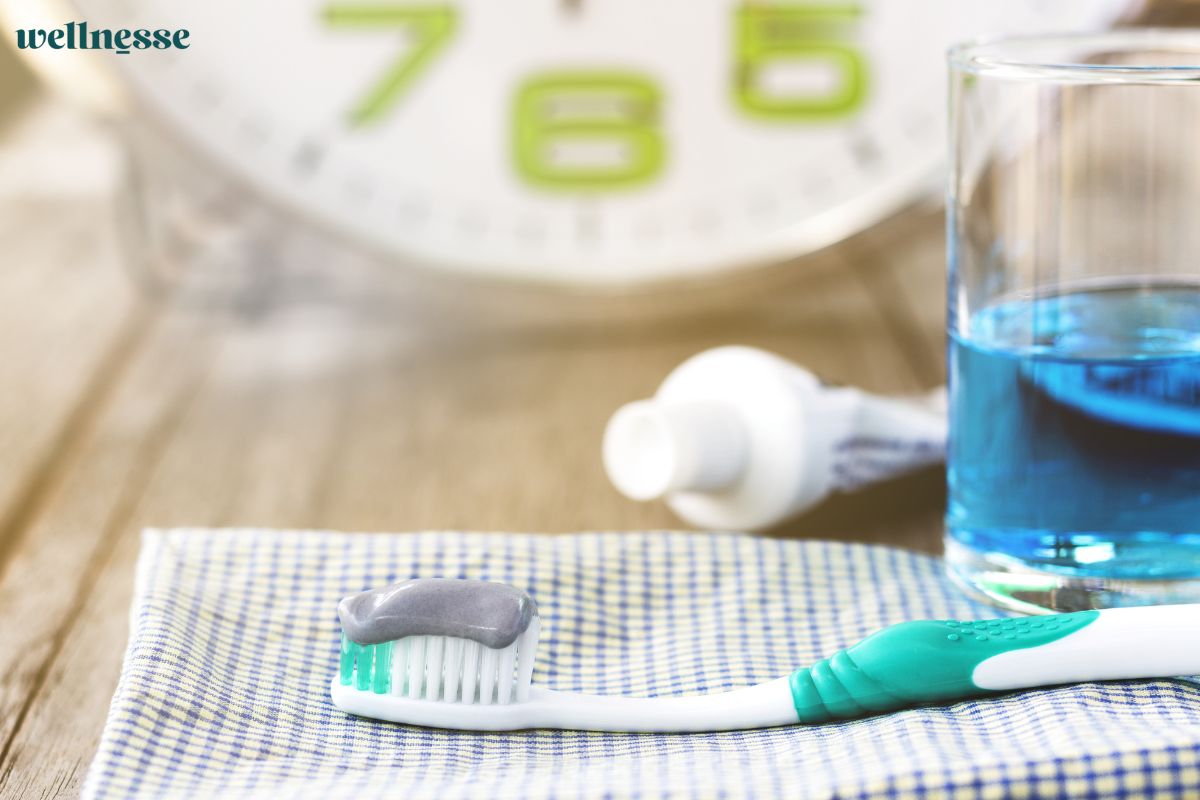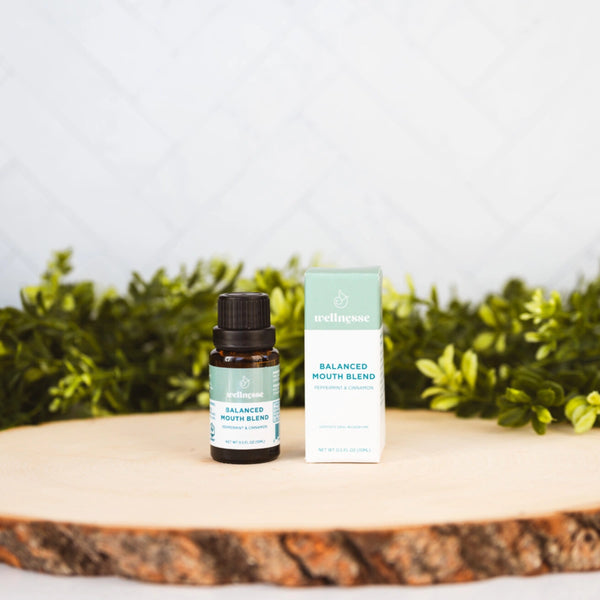Your mouth is incredibly porous, meaning everything you put in it (like toothpaste!) is quickly absorbed. Between the soft tissues in your mouth and the mere action of swallowing, choosing clean, healthy products really matters for your overall well-being.
Most of us don't think twice about the ingredients in our toothpaste. After all, we're not eating it, just brushing and spitting, right? But the science says otherwise.
Even if you rinse and spit, ingredients in oral care products can enter your bloodstream through the soft tissues in your mouth. Some are swallowed without us even realizing it, especially when it comes to kids.
Let’s take a closer look at why this matters and how absorption through the mouth works. Plus, which ingredients you might want to avoid when it comes to your toothpaste, mouthwash, and other oral care products.
How Our Mouth Absorbs
Our mouths aren’t just the first stop in the digestive process, they’re a gateway to the bloodstream and the rest of the body. There are several areas in the mouth with lots of blood vessels, especially under the tongue and along the cheeks. These areas have thin membranes and rich blood flow that allow certain substances to bypass the digestive system altogether and go directly into the bloodstream.
This route is so effective that many medications are specifically designed to dissolve in the mouth for fast absorption. Sublingual B12 or nitroglycerin for heart conditions are a few examples. When we absorb substances this way they travel quickly through the veins in our face and start circulating through the body.
Even without swallowing, ingredients in toothpaste and mouthwash can be absorbed through tissues in the mouth. This makes oral care a surprisingly direct route to your body’s internal systems.
How Much Toothpaste Do We Actually Swallow?
Probably more than you realize! Even if you spit, some toothpaste and mouthwash still make their way inside the body. Even floss has an effect since it’s rubbed directly against the gums.
Studies show that adults swallow about 3 percent of the toothpaste we brush with, which averages out to about 0.04 grams. That may not sound like much, but if you brush twice a day, that adds up to nearly 30 grams a year. More if you're using products with high-concentration ingredients.
Children swallow significantly more. In one study with 44 children they swallowed on average 27% of their toothpaste during brushing. Other studies suggest that figure could be as high as 60%, especially in younger kids who haven’t mastered spitting yet.
This is a big deal when you consider the types of ingredients that are common in many conventional toothpastes.
What’s Lurking In Most Toothpaste
Let’s walk through some of the more concerning ingredients often found in mainstream oral care products.
Fluoride
Fluoride is the most well-known (and most debated) ingredient in toothpaste. While it may help harden enamel, decades worth of studies have raised concerns about its negative health effects. Children especially are susceptible to fluoride use.
In one study, adults who switched to a toothpaste with fluoride saw their urine fluoride levels more than double after just two weeks. Even after rinsing, fluoride levels in the mouth remained elevated for up to an hour. In some cases it was even longer, depending on the concentration. This means some fluoride is being absorbed directly through the oral tissues.
Fluoride overexposure has been linked to risks like fluorosis (discoloration or damage of the teeth), lower IQ, bone damage, and other systemic effects. And because kids swallow more toothpaste than adults, their exposure levels are easily higher.
Nano-Hydroxyapatite
This newer alternative to fluoride is gaining popularity and shows promise for remineralizing teeth. However, research is still limited on the long-term safety of nano-hydroxyapatite in oral products. Nanoparticles, by their nature, can penetrate deeper into tissues and may have effects that aren’t yet fully understood. Nano-hydroxyapatite is also synthetically derived, unlike the natural micro-hydroxyapatite Wellnesse uses. Synthetic = not natural. New research also points to some potentially concerning health effects of nano-hydroxyapatite particles in toothpaste.
Triclosan and Antibacterial Ingredients
Triclosan was once common in toothpaste for its antibacterial properties, but it’s since been removed from some. In recent years the FDA banned its use in soaps due to its link to hormone disruption and antibiotic resistance. It’s also registered as a pesticide with the EPA. Unfortunately, it can still appear in some oral care products.
Even after rinsing, pesticides like triclosan can stay in the mouth and enter the bloodstream through the oral tissues. These substances aren’t meant to be inside the human body long-term, or at all. Frequent exposure to triclosan, like from brushing twice a day, creates an unnecessary risk.
Artificial Dyes, Colors, and Sweeteners
Many of the toothpastes you’ll find on the shelf (especially children’s toothpaste), have artificial colors, artificial flavors, and artificial sweeteners. While they might make brushing seem more appealing, they aren’t doing our mouth any favors. Some food dyes have been linked to hyperactivity in children, allergic reactions, or other health issues.
Common artificial sweeteners like saccharin have been studied for their potential to cause cancer. Animal studies show saccharin causes damage to sperm, including DNA damage, which can affect fertility.
If you wouldn’t want your child swallowing food dyes or synthetic sweeteners, it’s worth reconsidering their use in toothpaste.
Sodium Lauryl Sulfate (SLS)
SLS is a foaming agent used in many personal care products. In toothpaste, it creates that familiar frothy texture we associate with “clean.” But SLS is a known irritant and can contribute to canker sores, gum sensitivity, and dryness in the mouth. It can also make oral tissues more permeable, allowing other ingredients to enter the bloodstream more easily.
Choosing Safer Oral Care Products
The good news is you don’t have to choose between effective oral care and safe ingredients.
Natural toothpaste brands that focus on transparency, research-backed ingredients, and non-toxic formulas offer a better alternative for both adults and kids. At Wellnesse, we’ve formulated our toothpaste to support a healthy oral microbiome. And all without exposing your body to questionable chemicals.
We use ingredients like:
-
Micro-hydroxyapatite for strong enamel
-
Green tea extract for its natural antibacterial properties
-
Xylitol to discourage cavity-causing bacteria
-
Aloe vera to soothe gums
-
Essential oils for flavor and added microbial benefits
Our toothpaste is free from fluoride, artificial dyes, triclosan, parabens, and SLS. It’s safe for the whole family, even your little one. Kids love our Strawberry naturally flavored toothpaste! Plus you can find safe and natural silk floss, oral probiotics, and our Balanced Mouth Blend.
Final Thoughts on Healthy Oral Care
Oral care isn’t just about your teeth, it’s a daily habit that directly impacts your overall health. The mouth is a powerful point of entry into the body, and what we put there matters.
Whether you're brushing your toddler’s teeth or reaching for your own tube of toothpaste, it’s worth asking: Would I be okay if some of this ended up inside me? Because science shows that it does.
Choosing natural, clean oral care products is a simple yet powerful step toward supporting your body’s health. It all starts with what you put in your mouth.
Sources:
-
Opydo-Szymaczek, J., et al. (2022). Fluoride Intake and Salivary Fluoride Retention after Using High-Fluoride Toothpaste Followed by Post-Brushing Water Rinsing and Conventional (1400-1450 ppm) Fluoride Toothpastes Used without Rinsing. International journal of environmental research and public health, 19(20), 13235.
-
Rahimipour, M., et al. (2014). Saccharin consumption increases sperm DNA fragmentation and apoptosis in mice. Iranian journal of reproductive medicine, 12(5), 307–312.
-
U.S. Environmental Protection Agency. (2025, March 12). Triclosan. https://www.epa.gov/ingredients-used-pesticide-products/triclosan
-
Petrović, B., Kojić, S., Milić, L., Luzio, A., Perić, T., Marković, E., & Stojanović, G. M. (2023). Toothpaste ingestion-evaluating the problem and ensuring safety: systematic review and meta-analysis. Frontiers in public health, 11, 1279915.
-
Bartlett, J. A., & van der Voort Maarschalk, K. (2012). Understanding the oral mucosal absorption and resulting clinical pharmacokinetics of asenapine. AAPS PharmSciTech, 13(4), 1110–1115.
-
Mani, A., et al. (2019, July- Dec). Are All Additives of Toothpastes Rational?. Journal of Mahatma Gandhi Institute of Medical Sciences, 24(2):p 71-74.
-
Jyothi, B., et al. (2023, February). A Review on Fast Dissolving Sublingual Films. International Journal of Pharmacy and Pharmaceutical Research. 26(3).
-
Hua S. (2019). Advances in Nanoparticulate Drug Delivery Approaches for Sublingual and Buccal Administration. Frontiers in pharmacology, 10, 1328.
